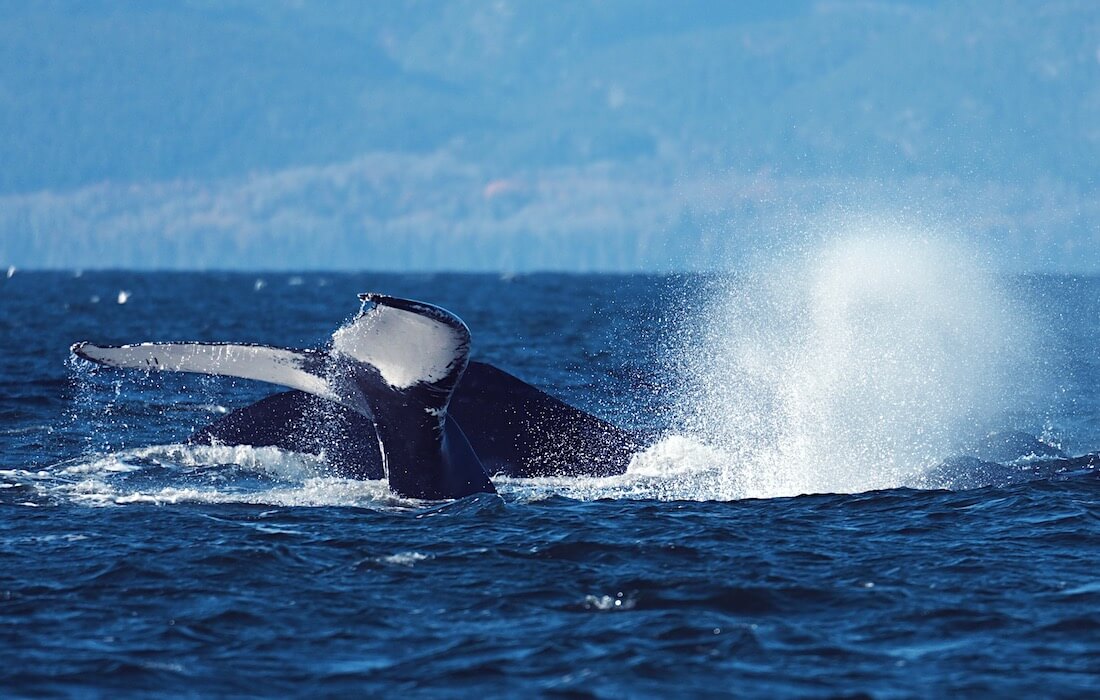One, two, three…four newborns are surrounding us!
In 18 hours with belugas this week, we conducted four censuses and encountered several herds of females with young and newborns. Here’s one of the highlights!
Afternoon of September 4, 2015: we are with a herd of about 25 belugas on the other side of Île aux Lièvres. The animals are constantly changing direction, swimming in circles and the group compositions are changing every time they surface. We struggle to follow them, but we nevertheless manage to observe a first calf. A few seconds later, a second calf appears 100 m behind the first one. The animals dive. Four minutes later, a large group returns to the surface, the animals are quite close to one another and among them, a third newborn! At the end of the breathing sequence, the group quietly disperses and departs in small groups. And we’re still counting: almost simultaneously, four mother-calf pairs surface, each one some forty metres from the next. This is one of the largest concentrations of calves observed this summer. Although we remain concerned after another year of high mortality of newborn belugas, observations such as these are very encouraging.
Click on the map to navigate with the Bleuvet and discover the highlights of the week! Although this map is only available in French, the image it illustrates goes beyond language.
IDENTIFICATION OF THE WEEK
Yogi – adopted in 1988 by Bell Canada;
DL0204 – available for adoption;
GraCy – adopted in 2003 by Global Reservation Centre;
DL0631 – available for adoption;
Pascolio – adopted in 1990 by Tadoussac Merchants;
and DL0089, DL9031, etc.
The complete list of identified belugas requires meticulous efforts to match individuals, which will be undertaken after the field season.
 Property of the GREMM and the St. Lawrence National Institute of Ecotoxicology, the Bleuvet is a research boat dedicated to the research program on St. Lawrence belugas. Managed by GREMM scientific director Robert Michaud, the Bleuvet crew is composed of Michel Moisan, Tim Perrero and Simon Moisan.
Property of the GREMM and the St. Lawrence National Institute of Ecotoxicology, the Bleuvet is a research boat dedicated to the research program on St. Lawrence belugas. Managed by GREMM scientific director Robert Michaud, the Bleuvet crew is composed of Michel Moisan, Tim Perrero and Simon Moisan.





